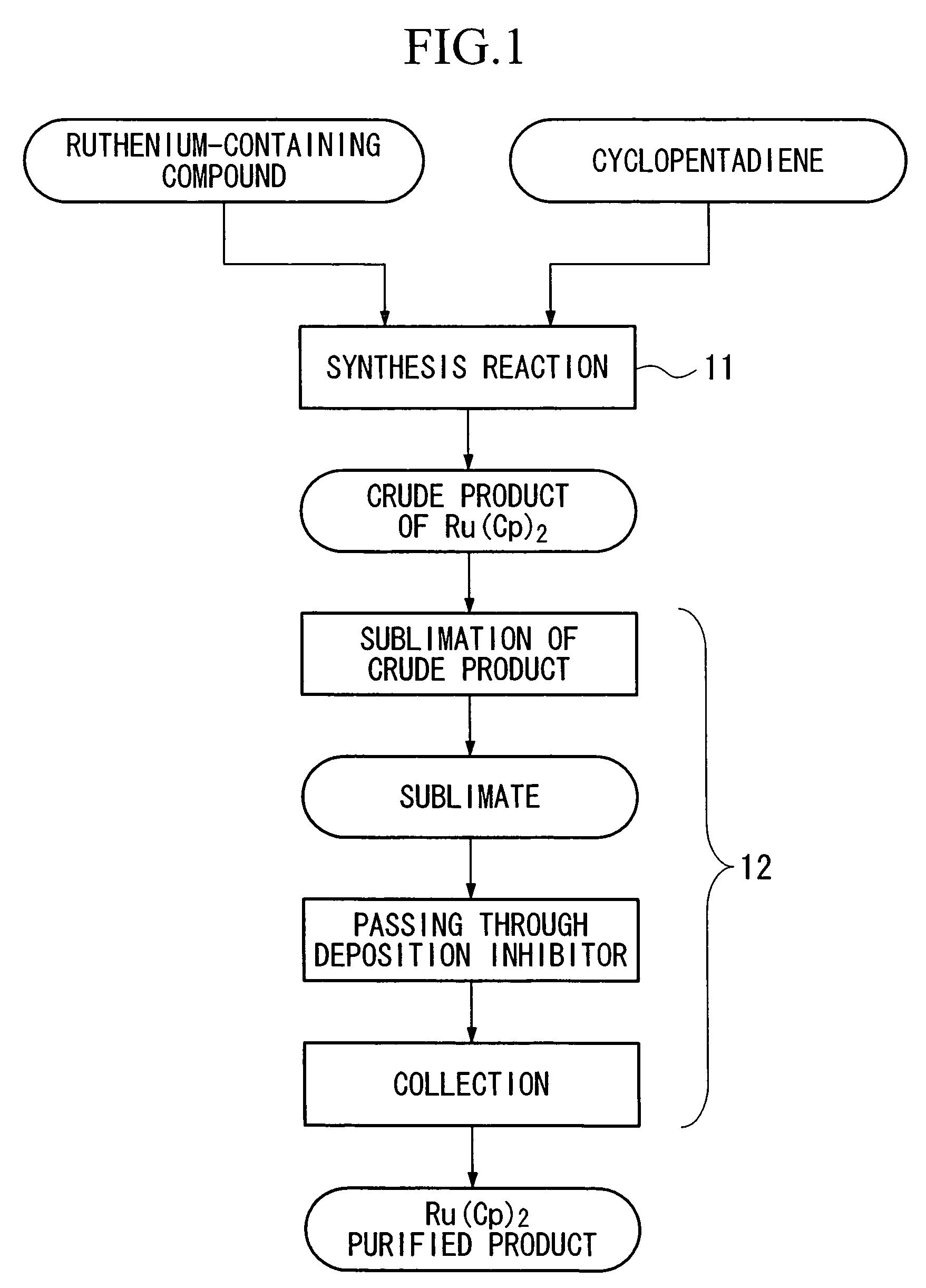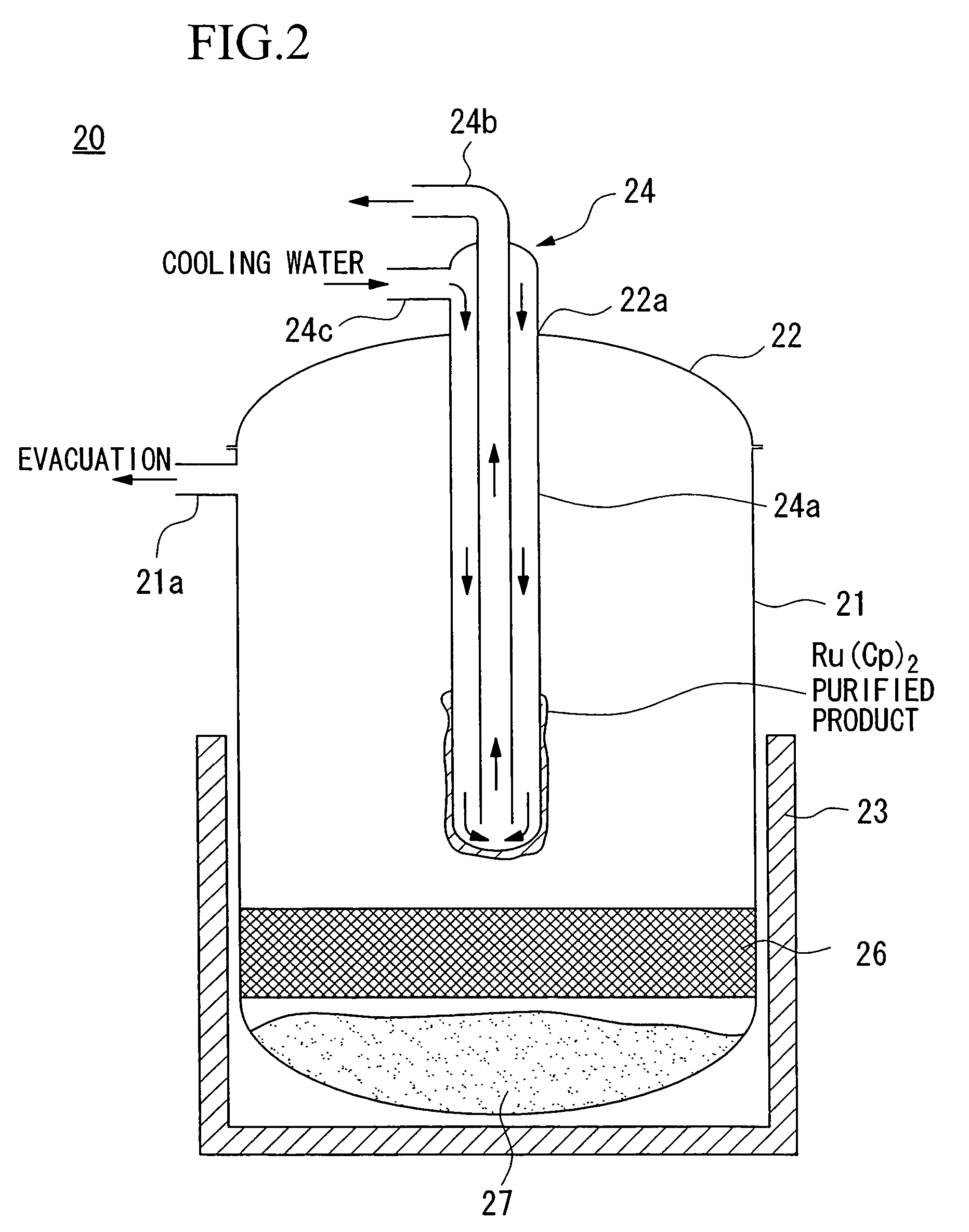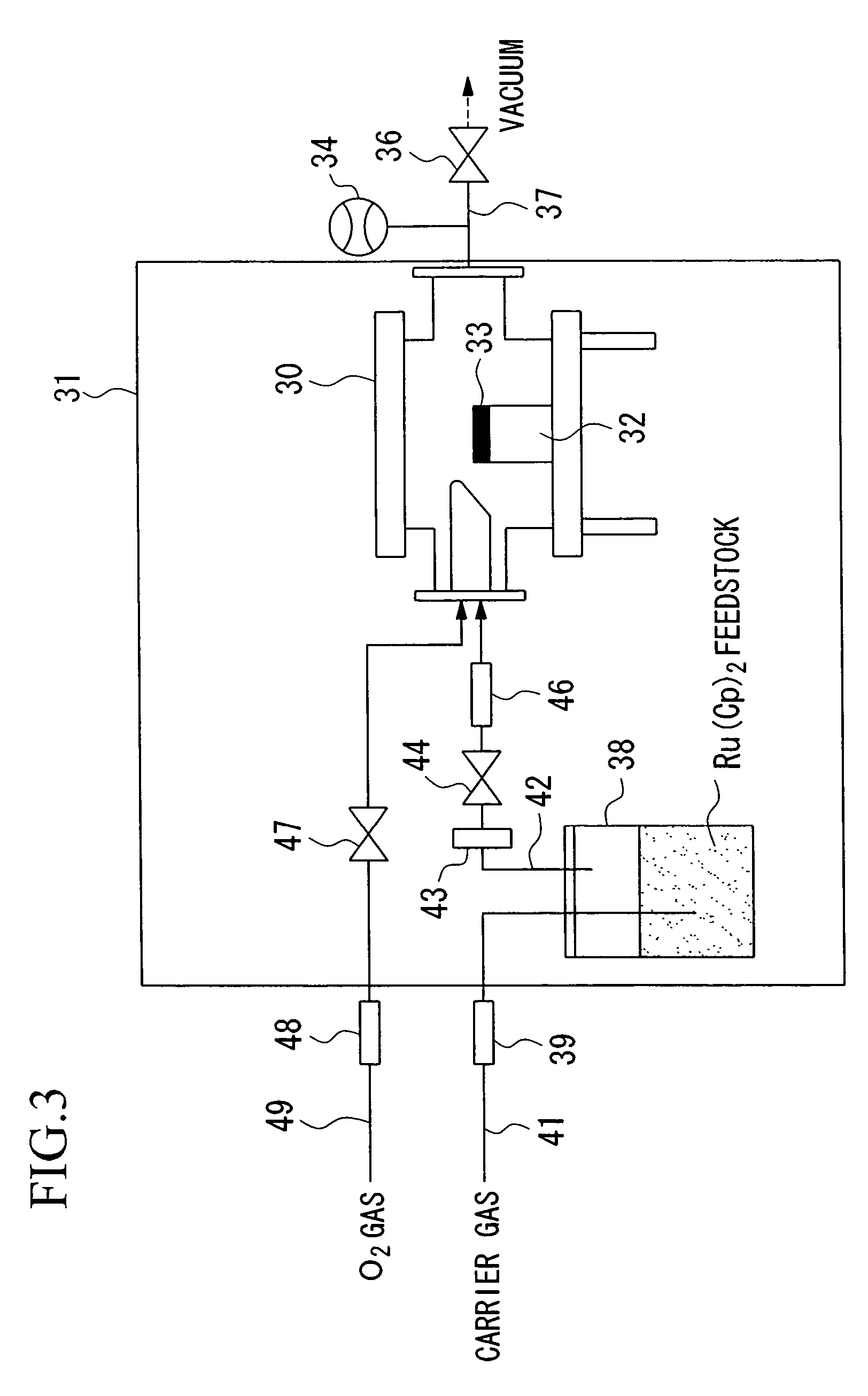Ruthenium compounds, process for their preparation, and ruthenium-containing thin films made by using the compounds
a technology of ruthenium compounds which is applied in the field of ruthenium compounds, process for their preparation, and ruthenium-containing thin films made by using the compounds, and can solve the problems of increasing the feed amount, inferior heat resistance of the electrode, and difficult handling of ru(etcp)/sub>2 complexes
- Summary
- Abstract
- Description
- Claims
- Application Information
AI Technical Summary
Benefits of technology
Problems solved by technology
Method used
Image
Examples
first embodiment
[0049]The present inventors have intensively researched the influence of impurities contained in a ruthenium compound on the film formation using the MOCVD method and confirmed that a proper film forming rate can be realized by optimizing the content of either or both of sodium and potassium among impurities contained in the ruthenium compound.
[0050]The ruthenium compound of the present invention is a ruthenium compound comprising a Ru(Cp)2 complex, wherein the content of either or both of sodium and potassium in the compound is 5 ppm or less. When the content of impurities exceeds 5 ppm, vaporization characteristics deteriorate. The content of impurities is preferably from 0 to 3 ppm, more preferably from 0 to 2 ppm, and still more preferably from 0 to 1.5 ppm.
[0051]The method of producing a ruthenium compound of the present invention will now be described.
[0052]First, as shown in FIG. 1, a crude product of a Ru(Cp)2 complex is obtained by using a ruthenium-containing compound and ...
example 1-1
[0071]A Ru(Cp)2 complex having a sodium content of 1.4 ppm produced by using a deposition inhibitor made of a glass wool was sealed in an ampule bottle under an argon atmosphere. The ampule bottle was heated to 200° C. by a heating furnace and then maintained at the same temperature for 72 hours. The ampule bottle was taken out from the heating furnace and air-cooled to room temperature. Vaporization characteristics of the ruthenium compound cooled to room temperature in the ampule bottle were measured by using a TG-DTA apparatus (manufactured by MAC-Science Co.). The measuring conditions by the TG-DTA apparatus are shown in Table 1.
[0072]
TABLE 1Temperature 25° C.–500° C.(Heating rate: 10° C. / min)Pressure101.3 kPaCarrier gas (Ar) flow rate 100 sccmMeasuring cellmade of aluminaMeasuring apparatusTGA-2000, manufacturedby MAC-Science Co.
example 1-2
[0073]In the same manner as in Example 1-1, except for using a Ru(Cp)2 complex having a potassium content of 1.7 ppm produced by using a deposition inhibitor made of a glass wool, vaporization characteristics were measured by the TG-DTA apparatus.
PUM
| Property | Measurement | Unit |
|---|---|---|
| mol % | aaaaa | aaaaa |
| temperature | aaaaa | aaaaa |
| TG- | aaaaa | aaaaa |
Abstract
Description
Claims
Application Information
 Login to View More
Login to View More - R&D
- Intellectual Property
- Life Sciences
- Materials
- Tech Scout
- Unparalleled Data Quality
- Higher Quality Content
- 60% Fewer Hallucinations
Browse by: Latest US Patents, China's latest patents, Technical Efficacy Thesaurus, Application Domain, Technology Topic, Popular Technical Reports.
© 2025 PatSnap. All rights reserved.Legal|Privacy policy|Modern Slavery Act Transparency Statement|Sitemap|About US| Contact US: help@patsnap.com



